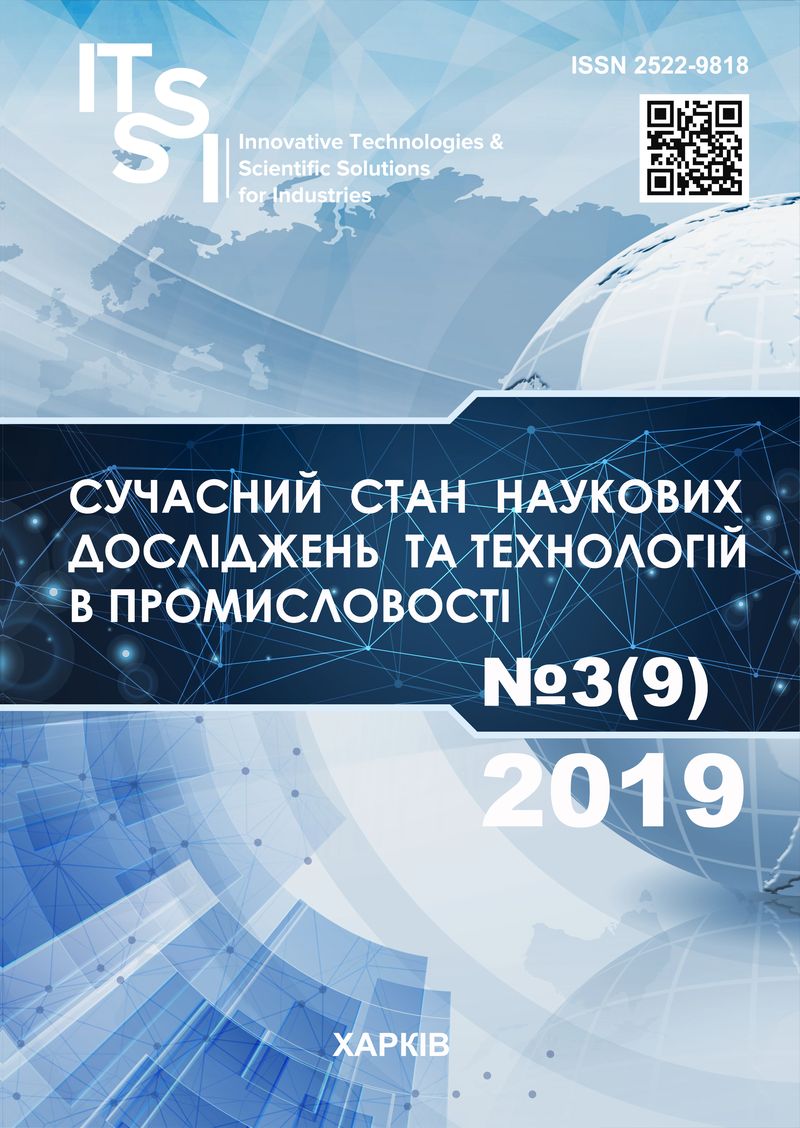FEATURES OF IMPLEMENTATION OF E-LEARNING IN THE CONTEXT OF CORPORATE DEVELOPMENT OF PERSONNEL
DOI:
https://doi.org/10.30837/2522-9818.2019.9.044Keywords:
methods, teaching, lectures, seminars, knowledge, abilities, skillsAbstract
The subject of the study is theoretical and methodological foundations of the introduction of e-learning. The purpose of the work is to study the peculiarities of implementing e-learning in the context of corporate development. The following tasks are solved in the article: definition of the spectrum of corporate training methods and their main characteristics; study of the evolution of e-learning; analysis of the main benefits of mixed learning. The article uses the following research methods: structural-comparative analysis to determine the main advantages of using each method of corporate learning; historical-logical analysis for the study of e-learning development; process analysis to determine the main stages of the implementation of e-learning. The following results were obtained: based on the analysis of corporate learning methods, the peculiarities of obtaining knowledge and acquiring practical skills by various methods of corporate learning were determined. On the example of the analysis of the training of the personnel of the State Service of Ukraine for Food Safety and Consumer Protection, it has been found that synchronous e-learning, asynchronous e-learning, mixed learning and self-study require a significant level of application of electronic technologies. Based on the study of the evolution of technology in e-learning, it has been established that the main technologies of e-learning are Web and Wireless technologies. The process of implementation of e-learning, that involves the interaction of the teacher, student and administrator in the electronic environment, is analyzed. The advantages of using e-learning are determined, the main of which is the ability to adjust the costs of such training depending on the needs of the enterprise. Conclusions: The natural consequence of the information society process is the rapid development of information and communication technologies and the widespread use of e-learning in the process of corporate development of personnel. It is expedient to use electronic technologies at all levels of management of the organization for both self-study and stationary training. The introduction of e-learning will allow enterprises to attract a significant number of staff without leaving their main activity, to regulate the costs of its implementation, to train different target groups of staff on a single methodological basis.
References
Tkachenko, A. M. (2014), "Professional development of employees as nowadays urgent task", Economic Bulletin Donbass, No. 1, P. 194–197.
Puchkova, S. I. (2008), "Innovations in the practice of employees management at modern companies", Bulletin of Social and Economic Research: Sb. sciences ed. ed. M.I. Zveryakov, No. 34, P. 140–147.
Kryzhanivsky, E. I., Andybur, A. P., Danylyuk-Chernykh, I. M. & Petrenko, V. P. (2014), "Continuous education of the oil and gas industry employees in Ukraine as a main condition to maintain and increase its competitiveness", The oil and gas industry of Ukraine, No. 4, P. 3–8.
Parkhomenko, V. M (2010), "Development the software system for improving the employees qualification of Ukraine Customs Service with blended learning methods (traditional and distance)", Bulletin of the Academy of Customs Service of Ukraine. Series: Economics, No. 2, P. 52–57.
Bugaychuk, K. L. (2014), "Distance and e-learning: the essence, features, relations", Bulletin of Postgraduate Education, No. 10, P. 17–27.
Bykov, V. Yu. (2001), "Project approach and distance learning in the manager professional training", Crimean Pedagogical Readings: Materials of the International Scientific Conference, P. 30–50.
Banit, O. V. (2014), "Corporate training as an innovative technology in the system of company training of employees", Pedagogical innovations: ideas, realities, perspectives, No. 1 (12), P. 94–98.
State Service of Ukraine for Food Safety and Consumer Protection, available at : http://www.consumer.gov.ua/News/
Whiddett, S., Hollyforde, S. (2003), A practical guide to competencies: how to enhance individual and organisational performance, London : CIPD Publishing, 764 p.
Oxford English Dictionary, available at : https://en.oxforddictionaries.com/
Kuzmin, O. Ye., Kolodiychuk, A. V. (2011), "The methodology of motivation in the management of employees", Scientific bulletin of NLTU of Ukraine, No. 21 (2), P. 313–319.
Khilukha, O., Levchuk, A., Maksymchuk, A. (2017), "Corporate Culture: Technology of its Formation", Economic journal of Lesia Ukrainka Eastern European National University, No. 3 (11), P. 47–52. DOI: https://doi.org/10.29038/2411-4014-2017-03-47-52.
Lipych, L. G., Pustyuglha, L. S. (2010), "The genesis of the development of theories of labor motivation", Science, No. 1, P. 17–19.
Melnik, O. G., Bodaretskaya, O. N. (2015), "Types of technologies of the employee's motivation in machine-building enterprises", Problems of Economics, No. 3, P. 143–148.
Nizhnik, V. M., Polinkevich, O. M. (2012), "Methods of estimating the influence of factors of the environment on business processes of industrial enterprises", Economical sciences. Ser.: Economist management, No. 9 (2), P. 334–345.
Malieieva, J., Persiyanova E., Kosenko V. (2018), "Information and software support of the hr manager of an IT-company", Innovative Technologies and Scientific Solutions for Industries, No. 1 (3), P. 22–32. DOI: https://doi.org/10.30837/2522-9818.2018.3.022.
Downloads
How to Cite
Issue
Section
License
Copyright (c) 2019 Oksana Khilukha

This work is licensed under a Creative Commons Attribution-NonCommercial-ShareAlike 4.0 International License.
Our journal abides by the Creative Commons copyright rights and permissions for open access journals.
Authors who publish with this journal agree to the following terms:
Authors hold the copyright without restrictions and grant the journal right of first publication with the work simultaneously licensed under a Creative Commons Attribution-NonCommercial-ShareAlike 4.0 International License (CC BY-NC-SA 4.0) that allows others to share the work with an acknowledgment of the work's authorship and initial publication in this journal.
Authors are able to enter into separate, additional contractual arrangements for the non-commercial and non-exclusive distribution of the journal's published version of the work (e.g., post it to an institutional repository or publish it in a book), with an acknowledgment of its initial publication in this journal.
Authors are permitted and encouraged to post their published work online (e.g., in institutional repositories or on their website) as it can lead to productive exchanges, as well as earlier and greater citation of published work.














